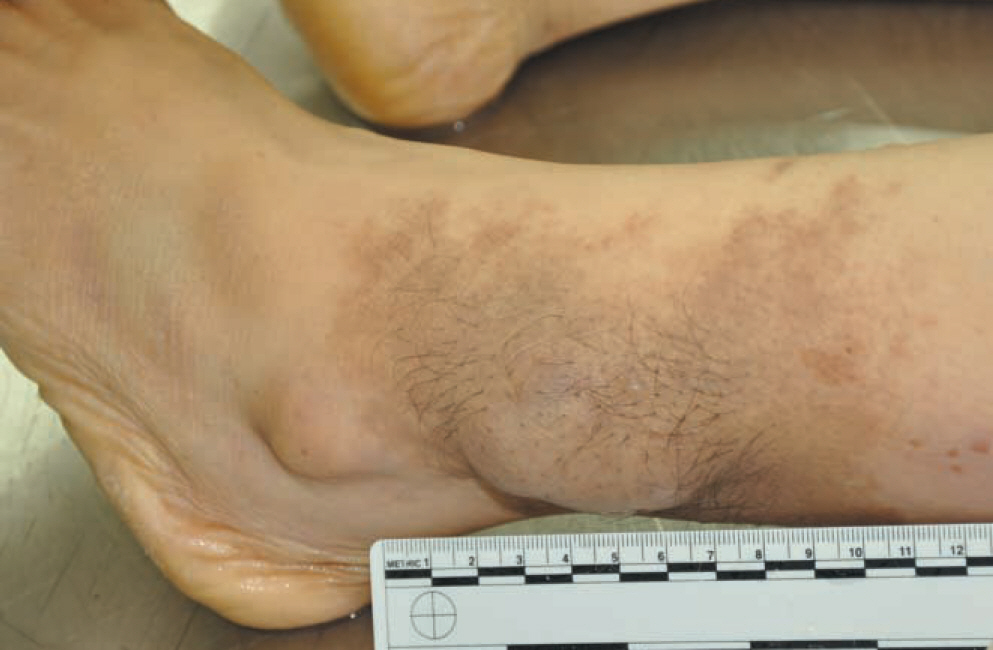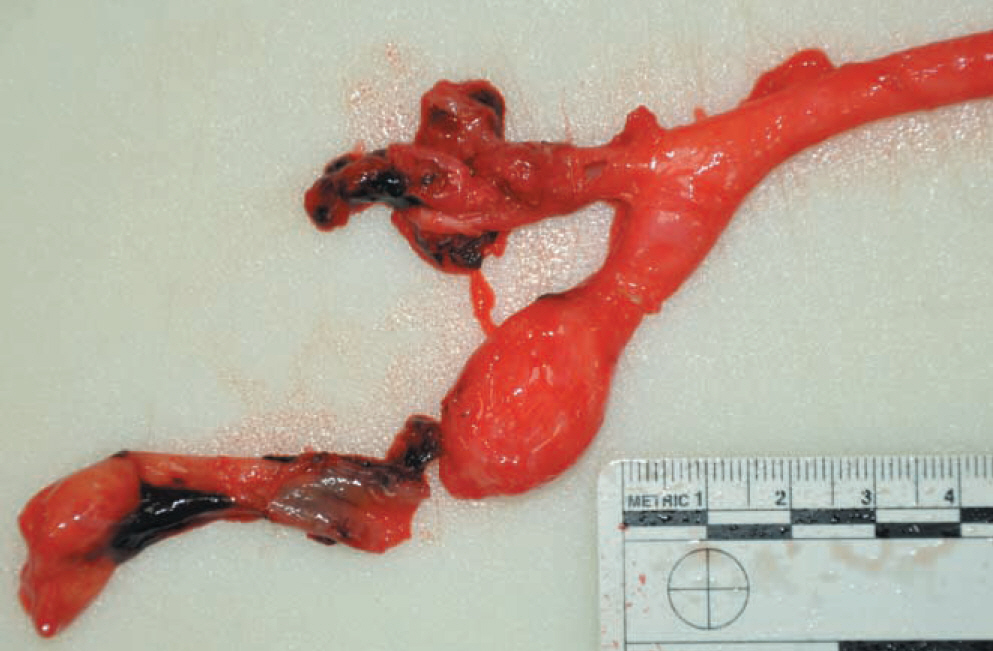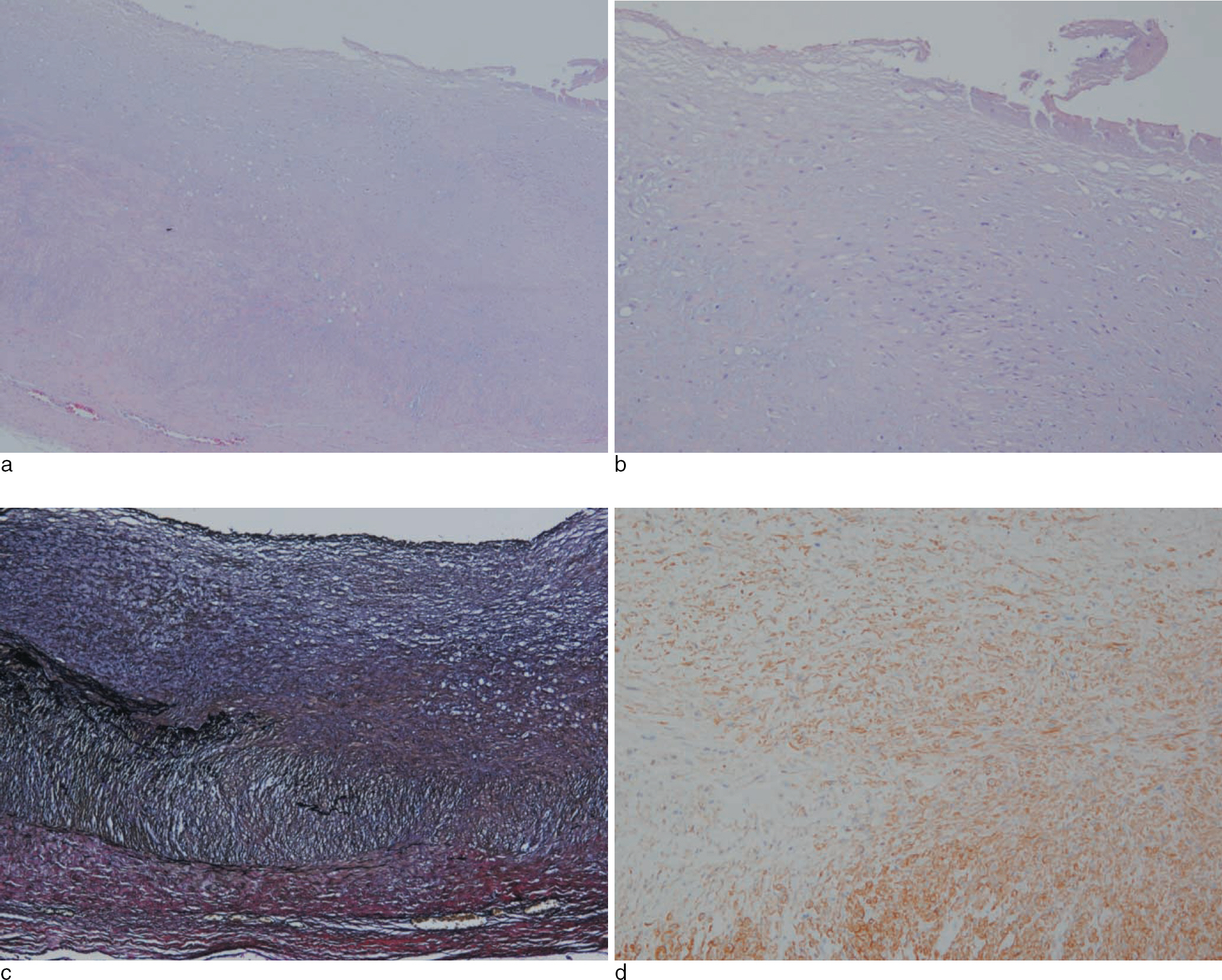Korean J Leg Med.
2013 Feb;37(1):34-37. 10.7580/kjlm.2013.37.1.34.
Aneurysmal Rupture of the Internal Carotid Artery in a Presumed Neurofibromatosis Type I Patient
- Affiliations
-
- 1Division of Forensic Medicine, National Forensic Service, Seoul, Korea. giifpap@korea.kr
- KMID: 2250278
- DOI: http://doi.org/10.7580/kjlm.2013.37.1.34
Abstract
- Aneurysm of the internal carotid artery is a rare disease and is known to be associated with congenital arterial anomalies such as neurofibromatosis type I (NF-I). NF-I is an autosomal dominant neurocutaneous disorder characterized by a variety of manifestations that involve the central and peripheral nervous systems, skin, vascular system, and skeleton. In particular, the involvement of vascular abnormalities in NF-I is well known. Any vessel may be affected by this condition, although the renal artery is most frequently involved. The vascular abnormality can be occlusive or an aneurysmal degenerative change. Therefore, symptomatic presentations might assume an indolent pathophysiologic course such as hypertension, or manifest as a catastrophic event such as arterial rupture that could result in sudden death. We report a rare autopsy case of an aneurysmal rupture of the internal carotid artery in a woman with suspected NF-I, who collapsed in her home.
MeSH Terms
Figure
Cited by 1 articles
-
Spontaneous Extracranial Vertebral Artery Dissection in a Neurofibromatosis 1 Patient with Bilateral Intrathoracic Spinal Meningoceles around the Scoliosis: Report of an Autopsy Case
Ji Hye Park, Jaehong Park
Korean J Leg Med. 2016;40(1):14-18. doi: 10.7580/kjlm.2016.40.1.14.
Reference
-
1. Lee MJ, Stephenson DA. Recent developments in neurofibromatosis type 1. Curr Opin Neurol. 2007; 20:135–41.
Article2. Byard RW. Forensic considerations in cases of neurofibromatosis-an overview. J Forensic Sci. 2007; 52:1164–70.
Article3. Onkendi E, Moghaddam MB, Oderich GS. Internal carotid artery aneurysms in a patient with neurofibromatosis type 1. Vasc Endovascular Surg. 2010; 44:511–4.
Article4. McCollum CH, Wheeler WG, Noon GP, et al. Aneurysms of the extracranial carotid artery. Twenty-one years’ experience. Am J Surg. 1979; 137:196–200.5. Reubi F. Neurofibromatose et lesions vasculaires. Schweiz Med Wochenschr. 1945; 75:463–5.6. Hamilton SJ, Friedman JM. Insights into the pathogenesis of neurofibromatosis 1 vasculophathy. Clin Genet. 2000; 58:341–4.7. Friedman JM, Arbiser J, Epstein JA, et al. Cardiovascular disease in neurofibromatosis 1: report of the NF1 cardiovascular task force. Genet Med. 2002; 4:150–11.
Article8. Oderich GS, Sullivan TM, Bower TC, et al. Vascular abnormalities in patients with neurofibromatosis syndrome type Ⅰ: clinical spectrum, management, and results. J Vasc Surg. 2007; 46:475–84.
- Full Text Links
- Actions
-
Cited
- CITED
-
- Close
- Share
- Similar articles
-
- Spontaneous Hemothorax in a Patient with Type I Neurofibromatosis
- Lethal Hemomediastinum due to Spontaneous Rupture of an Aberrant Bronchial Artery in a Patient with Neurofibromatosis Type 1: Successful Treatment with Embolization
- Intracranial and Extracranial Fusiform Aneurysms in a Patient with Neurofibromatosis Type 1: A Case Report
- Internal Carotid Artery Aneurysms Arising Remote from Arterial Divisions: Dorsal and Medical ICAA
- Staged Management of a Ruptured Internal Mammary Artery Aneurysm






